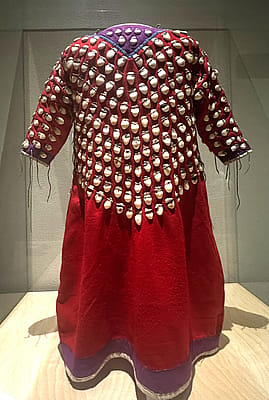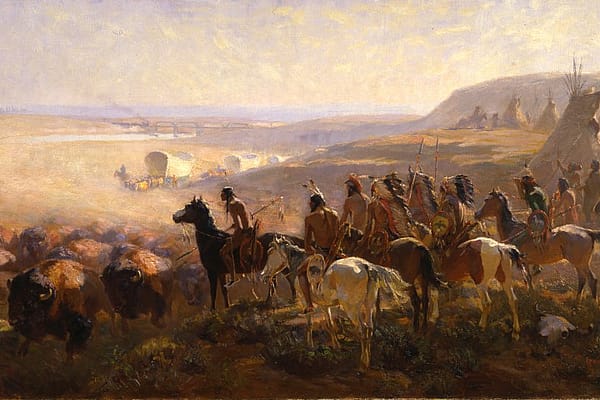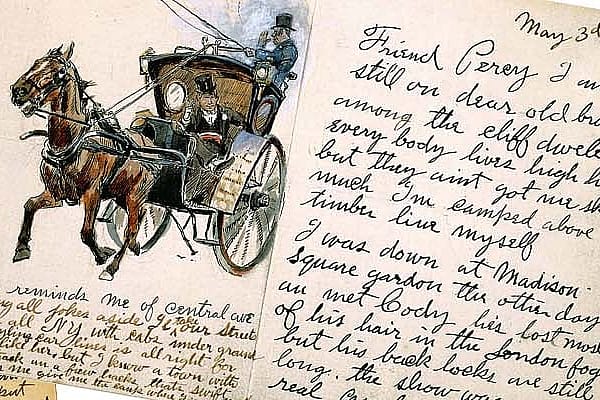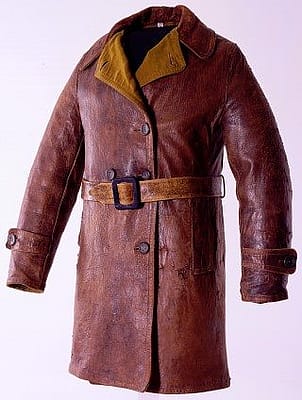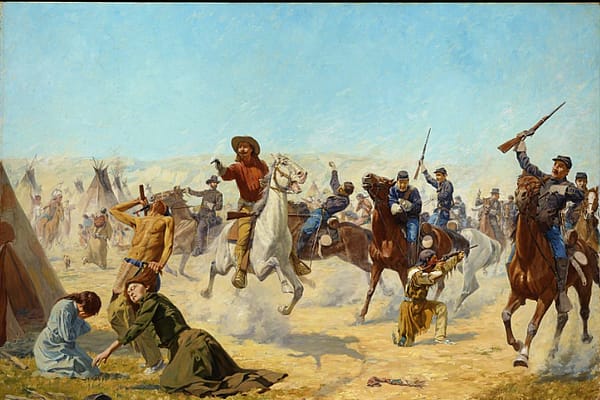
Colt’s Colt?
This article—authored by former curator Richard Rattenbury—was originally featured in a 1981 Buffalo Bill Center of the West newsletter.
Colonel Samuel Colt passed from the American scene in January, 1862, amidst the anguish of the Civil War. He left behind a highly advanced and justly famed industrial enterprise founded on his genius for arms design and mass production techniques—the Colt’s Patents Firearms Manufacturing Company. Today, as the Firearms Division of Colt Industries, his legacy continues with the remarkably enduring reputation.
Colt, however, was not simply an industrial entrepreneur; he was also an extraordinary promotional artist. Many cased and embellished presentation arms, not unlike the pair of Model 1851 Navy revolvers illustrated above, were given by Colt to notable political and military personalities in an effort to popularize and advance the enterprise. Colt well understood the intrinsic value and aesthetic appeal of fine firearms, and he became a notable collector in his own right.
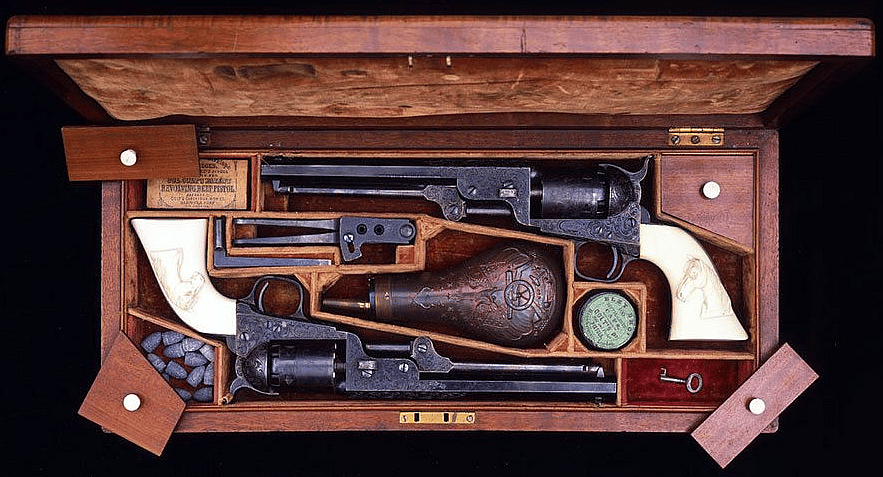
Many collectors and dealers over the years have believed that this exquisitely enhanced, matched pair of .36 caliber 1851 Navys (illustrated) were part of Colt’s personal assemblage of arms. This belief has been sustained largely because of the very unusual horse-head motifs on the one-piece ivory grips of both revolvers.
Such an embellishment is unknown on any other existing pair of matched Colt revolvers, and it is one eminently associated with the Colonel’s name and trademark. Yet, no solid documentary evidence exists to substantiate this prevailing attribution.
Serially numbered 96, 456 and 96, 458, the revolvers were manufactured in 1860—within the time frame of the Colonel’s own collecting days. Their casing and superb embellishment clearly indicate that they were worked up as presentation grade arms. However, the lack of any presentation inscription on the casing, or on the backstraps of the revolvers, suggests the possibility that the pair never left Colt’s hands.
Whatever their early history, the revolvers today constitute an extremely rare and desirable cased set, holding a position among the blue chip items of the contemporary collecting market. With serial numbers all but consecutive, these Fourth Model 1851 Navys form an obvious matched pair. The high relief-cared, horse-head grip motifs present a unique indication of their relatedness. Also significant are the nearly identical patterns of fine scroll engraving in the style of the nineteenth century master, Gustave Young.
The revolvers are housed in an elegant casing of mahogany and accompanied by Colt flask, bullet mold, takedown tool, and percussion cap tin. The casing is unusual in its rather long and narrow dimensions. The interior lid pulls of ivory and the lustrous red velvet lining create a striking and complimentary environment for the near-mint revolvers.
For many years a part of the famed William M. Locke Collection, this handsome cased set has a distinguished provenance among notable dealers and collectors. It was acquired by the Winchester Museum in 1979, and has been exhibited in the Study Area of Handguns since the opening of the expanded Winchester galleries in June of 1980.
Written By
Michaela Jones
Michaela, a Cody, Wyoming native, is the Centennial Media Intern at the Center of the West for the summer of 2017. She recently graduated from the University of Wyoming with a bachelor's degree in English and minors in professional writing and psychology. She's interested in writing for digital spaces, producing social media content, and learning about technology's impact on communication. In her spare time, she enjoys reading non-fiction, exploring the mountainous Wyoming regions, and spending time with family and friends.

